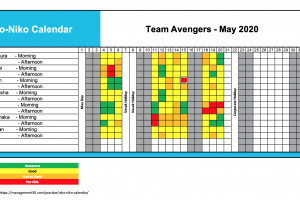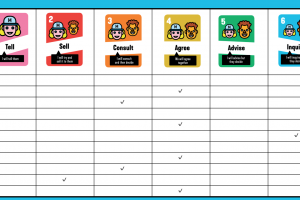
Agile Leadership – A Mindset Shift
Agile has truly sneaked into all forms of business and personal environments. Agility is not only a more effective and efficient iterative and incremental delivery of value but it is now becoming a way of life. Agility is all about building flexible and resilient enterprises (teams) at any level of the organization.
What is Agile Leadership?
Traditional leadership practices are outdated and are ineffective in today’s workplaces. Traditional practices in management 1.0 and 2.0 such as managers identifying the work, identifying specialty and expertise of staff, setting deadlines, allocating and work and monitoring and tracking progress with a cane or carrot does not cut in today’s context. Researches have proven that over 70% of workers are disengaged from managers and it is the number one cause for job dissatisfaction.
So, who exactly are true Agile leaders? They are inclusive, democratic leaders who show openness to ideas and innovation. They have a passion for learning and developing people to find a change in the way work gets done. Agile leaders revitalize and re-engage with their teams and become an agent for change by inspirationally communicating a shared vision so that the team embraces it as their own. They build self-organizing and self-managing teams while focusing on what really matters to deliver value. Agile leaders keep the team engaged, innovative and joyful and shifts their motivation from external to internal sources. This enables individuals to shift their energy from daily work that drains them to those that bring the most energy and happiness. Simply put, they are a new breed of business leaders who free themselves from micromanaging to focusing more on long-term strategic goals.
How do you develop yourself as an Agile leader?
Becoming an Agile leader is no easy task. Let’s face it! You need to stop worrying about your job and your position and help others elevate themselves so that you and the company can grow even higher. Easier said than done right? We as human-being worry about our own well-being before worrying about others, shouldn’t we?
So, what can we do to become better Agile leaders? Below are some key points that are to be explored even further (which I may do in articles that may come up later ).
Understand the 4 Agile values and 12 Principles and see how they impact leadership
The building blocks of Agility as we all know are the values and principles.
Let me quickly touch upon a few values and principles to show how deep analysis must be done.
‘Individuals and Interactions over Processes and Tools’ & ‘Customer Collaboration over Contract Negotiation’ focuses on the importance of people and relationships. In the past, it was the duty of the managers to coordinate and facilitate discussions internally and externally and maintain healthy relationships among stakeholders on an ongoing basis. Now the team members are expected to continuously make progress transparent and visible and make impediments visible and work on resolving them.
So, what is the role of the leader in such an environment?
The leader must help the team uncover better ways of interacting with each other. The leader must evaluate the interactions made, take metrics of the effectiveness, identify limitations or shortcomings in sessions in terms of alignment to purpose, effects of sidetracking, etc. and mentor the team members towards value-driven outcomes.
‘Our highest priority is to satisfy the customer through early and continuous delivery of valuable software’ is the 1st Agile principle. So, what is in it for the Agile leader. The leader’s primary goal must be to create the environment within and outside the project context to enable continuous delivery of value. The leader along with the team members must identify the intended value as a product/project vision, identify initiatives or programs aligned to the vision which can be cascaded down to value streams and product backlogs which would finally deliver the value. The leader’s role becomes more of an advocate for value definition and delivery here.
Understand when and how to use power and influence to drive value delivery.
Agile leaders are required to show expert power rather than positional power where they themselves must be able to do the tasks with the team members. Referent power or good PR, in other words, will come in handy for the Agile leaders in order to remove impediments and to coordinate the work. Reward power or the ability to reward or punish a person should be in the vocabulary of the agile leader to recognize who and when it is due and to solve skill gaps or performance-related issues.
Recognize how and when to communicate effectively so that you can be easily heard and understood by my team, the enterprise and external stakeholders
The Agile Leaders must be crisp, clear and concise. The conversations must be uni-directional so as not to confuse the participants. May it be at planning, update or a retrospective meeting the Agile leader must have purposeful and impactful communication. See whether or how you can do this?
Ascertain the difference between introverts and extroverts, what motivates them, how they behave, and how they interact to so that you can associate with them at a personal level
I myself being an introvert who values the opportunity to collaborate and give back knows very well how personality can impact work and relationships. Do you as the Agile leader spend ample time with each and every team member to understand how they think and what motivates them? Do they like challenges, do they really like to be put on the spot, do they need to need their own space?
Decide how to develop yourself and your team to create self-organizing teams in order to free up your time for more long-term big-picture goals
You can grow only if you become redundant. Only if you let your subordinates grow would you yourself be open to learning something more. Never think that your position is compromised or that the work won’t get done if you don’t look into it. There should always be another person ready to take up yours or another team member’s work.
Understand how to motivate team members, how emotional intelligence works to see how to get the most out of the team
Build projects and enterprises around motivated individuals. Give them the trust, environment and the support they need to get the job done. A deeper analysis of motivational theories such as Maslow’s needs hierarchy, Herzberg’s 2-factor theory, McGregor’s Needs theory and McClelland’s type X and Y should help you with this.
Final Thoughts on Agile Leadership
Agile leadership is a journey. There is no silver bullet that will make you a better leader overnight. Build your Agile leadership journey upon the strong foundation of Agile Values and Principles. Experiment, make mistakes and learn. It will make you and your team more resilient and flexible as Agile teams.
Tag:Agile Management



